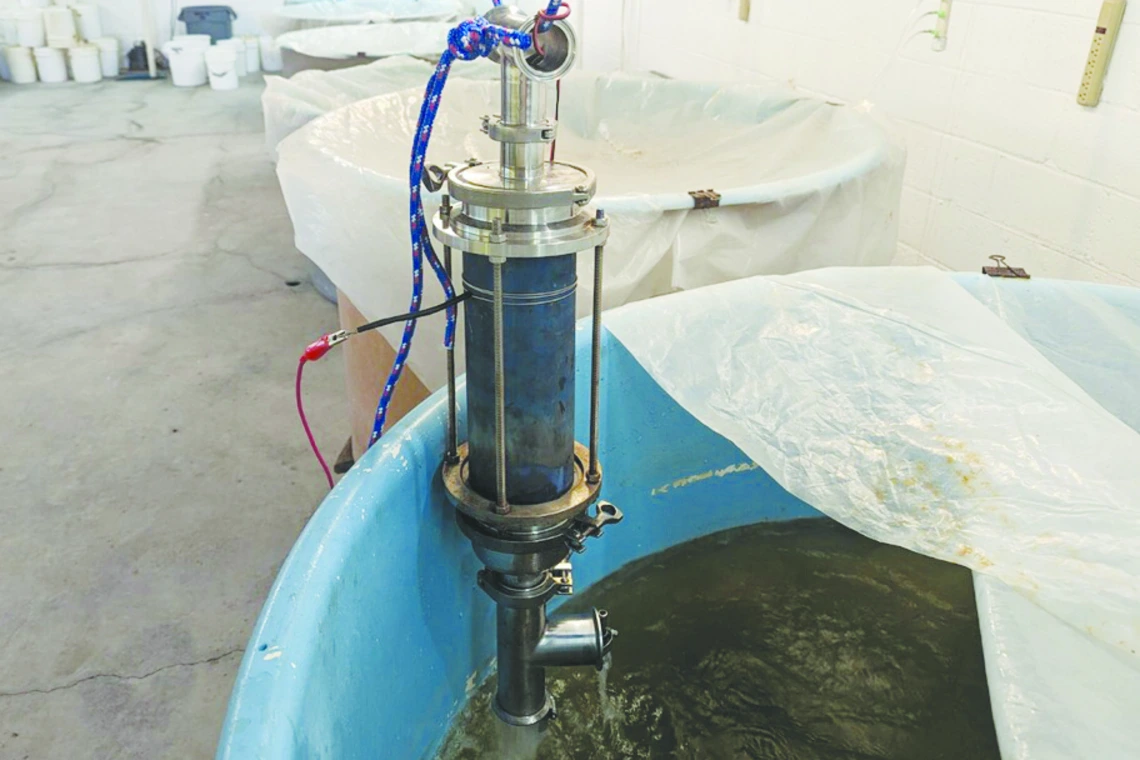Aquaculture lab testing a photocatalyst for use as a tool for removal of pathogens

The Aquaculture Pathology Laboratory (APL) at the West Campus Agriculture Center, located at Miracle Mile and I-10, is working with a company to test a new design of photocatalyst. The goal will be to determine whether this device can be used in commercial applications to maintain water quality, remove pollutants, and aid in pathogen control.
The process of photocatalysis has been researched for decades and proven to remove pollutants from both air and water. But practical application of the technology in real-world settings has been mostly limited to air purification or small-scale, personal water sterilization.
To adapt this technology into a tool which can be used in both personal aquariums and large-scale aquaculture, the APL, in the School of Animal and Comparative Biomedical Sciences, has begun work with a prototype photocatalyst designed to disinfect up to 1000 L (364 gal).
This photocatalyst was attached to a tank containing marine shrimp (Penaeus vannamei). Early results indicate a reduction in ammonia, nitrite, and nitrates. Nitrate removal in home aquariums often requires water exchanges, producing waste and requiring monitoring. The shrimp in this tank appear healthy and do not display any symptoms indicating a negative response to the device.
Previous publications in photocatalyst research have confirmed the ability to destroy organic compounds in water. The APL plans to test the ability of this device to remove pathogens harmful to shrimp, including bacteria, viruses, and fungal parasites. Future work may lead to collaboration in testing the unit’s ability to remove longer-lasting contaminants from water, including pesticides and PFAS- both of which have the potential to be harmful to humans.
Since the inventor of this technology claims it can destroy “forever chemicals” in-situ, yet show no harm to the shrimp, the APL will continue research endeavors to explore the potential applications of this technology.

